Year-End Tax Planning Strategies for Your Retirement Accounts
Between shopping for gifts and making New Year’s resolutions, the end of the year can be an exciting time for all of us.
Did you know it’s also a great time to review your retirement accounts for potential tax savings?
In light of current policy changes under consideration by Congress, the updates you make now may reduce your tax liability in the future. Required minimum distributions are back for those 72 and older. Charitable contributions, Roth conversions and capital gains opportunities are other options for some accountholders.
Here are a few financial action items for you to consider as the new year approaches.
Prepare for the Return of Required Minimum Distributions
Under the CARES Act of 2020, Congress waived required minimum distributions (RMDs) for traditional individual retirement accounts (IRAs) and employer-sponsored plans such as 401(k)s.1 If you were among those who elected not to take RMDs in 2020, you’ll need to start taking them again in 2021.
Minimum withdrawals are mandatory for the following individuals:
- Traditional IRA holders who are age 72 or older
- Employer plan participants who are 72 or older, except for those who meet the “still working” criteria
- Those who have inherited an IRA or employer-sponsored plan, with some exceptions
No RMDs are required if you have a Roth IRA.
If you were already receiving RMDs prior to 2020, you must resume taking them by December 31, 2021. If you turned 72 within the past year, you may delay your first RMD until April 1, 2022. You will then be required to take your second withdrawal by December 31, 2022.2
For those who have inherited a retirement account from someone else, many beneficiaries must withdraw the entire amount within 10 years of the accountholder’s death. Under the SECURE Act of 2019, exceptions to this rule include surviving spouses and other qualifying beneficiaries.
How much do you have to withdraw? The IRS publishes an RMD worksheet each year to help you tabulate your required distribution. Factors include your account balance as of December 31 of the previous year, your age and estimated life expectancy.3 Failure to withdraw the required RMD amount could result in a penalty totaling 50% of the amount not taken.
Consider a Roth IRA Conversion
With Congress considering higher tax rates, some traditional accountholders may want to consider a Roth conversion.
If you have a traditional IRA or employer-sponsored plan, your account is funded with pre-tax dollars. That means you pay no taxes on the money you put in until you begin withdrawing RMDs after reaching age 72. At that time, your distributions will be taxed as income.
A Roth IRA, however, is funded with after-tax dollars. In other words, you pay taxes on your income before putting it into your account. This option allows your money to grow tax-free for as long as you hold the account.
Converting to a Roth lets you lock in this year’s lower tax rates no matter what Uncle Sam decides to do in future years. You’ll pay taxes on the amount you roll over from a traditional IRA or employer plan into the Roth account. Making small partial conversions over time is another strategy for staying within a lower tax bracket and minimizing your liability. Because Roth conversions are a taxable event, we encourage you to consult with your CPA before making any decisions regarding your personal situation.
Look into Qualified Charitable Distributions
If you are 70 ½ or older, you have the option of making charitable contributions of up to $100,000 from your IRA or other retirement account. This option is known as a qualified charitable distribution, or QCD.4
Choosing a QCD has two benefits. First, the amount you distribute to a charity will be excluded from your gross income, which may lower your tax liability. Second, it can satisfy all or part of your required minimum distribution amount for the year.5
Your QCD transfer must meet three criteria:5
- The recipient must be a 501(c)(3) organization that is eligible to receive tax-deductible contributions
- You must obtain a letter from the organization acknowledging receipt of your donation
- Your IRA trustee must transfer the funds directly from your account to the charity
If you are between 59 ½ and 70 ½ and plan to itemize deductions, a so-called mega-QCD offers another possibility for lowering your tax burden. Typically, you may only deduct charitable contributions totaling 60% of your adjusted gross income (AGI) for the year. However, Congress temporarily raised that limit to 100% of AGI in 2020 and extended that deduction into 2021. That means you have one more year to donate up to 100% of your AGI to a qualifying charity and enjoy the tax benefits of that contribution.
Leverage Net Unrealized Appreciation (NUA)
You may be eligible for favorable capital gains tax rates if you take a distribution of company stock from an employer-sponsored retirement plan during the current tax year.
Net unrealized appreciation (NUA) is the difference between your cost basis in the company and its fair market value at the time of your distribution. The amount of your cost basis will be taxed as income, but the NUA is taxed as long-term capital gains, which enjoys a lower rate than your regular income tax rate.6
For example, let’s say the total value of your company stock is $65,000 at the time of your distribution, including a $25,000 cost basis. You would owe income tax on that $25,000, but your NUA of $40,000 would be taxed as long-term capital gains.
In order to qualify, you must hold employer securities in a qualified employer-based retirement account such as a 401(k) or similar plan. Examples include company stock in a profit-sharing plan, stock bonus plan or pension. Your distribution must be a lump sum of all funds held in company stock, and the funds must be properly transferred to a non-IRA account. The distribution must take place after leaving your job or after reaching age 59 ½.6
Understand the Pro-Rata Rule for Backdoor Roth Conversions
The IRS imposes income limits restricting who may contribute money to a Roth IRA. For 2021, the limit is $208,000 in modified adjusted gross income for couples, and $140,000 for singles.7
However, a backdoor Roth IRA conversion offers a path for higher earners to get around those limits. Here’s how it works:7
- First, you contribute money to a traditional IRA.
- Then you convert that contribution to a Roth.
- Because Roth IRAs are funded with after-tax dollars, you will pay taxes on the amount you convert.
- You will also pay taxes on any gains from your traditional IRA.
The IRS uses what is known as a pro-rata rule to determine how much tax you’ll pay on a backdoor Roth conversion. First, the IRS looks at the total amount held across all IRA accounts. Next, they will determine what percentage of that total is funded with pre-tax dollars. That percentage will be the amount of your conversion that is subject to taxation. For example, if 70% of your funds are in pre-tax dollars, then 70% of your backdoor Roth conversion will be considered taxable income.6
Understanding Your Retirement Options
Even though we are living through uncertain times, the good news is you have many options for managing your money in retirement. At The Resource Center, our independent financial advisors are here to provide you with up-to-date information, answer your questions and help you make the best decisions to meet your needs.
We encourage you to reach out to us to schedule a consultation. You may call us at 417-882-1800, send an email to info@resourcecenterinc.com, or contact us online at any time.
Sources:
1: https://www.congress.gov/116/bills/hr748/BILLS-116hr748enr.pdf
3: https://www.irs.gov/pub/irs-tege/uniform_rmd_wksht.pdf
4: https://www.irs.gov/retirement-plans/retirement-plans-faqs-regarding-iras-distributions-withdrawals
5: https://www.jdsupra.com/legalnews/year-end-charitable-giving-and-ira-3937954/
6: https://www.thebalance.com/when-does-using-net-unrealized-appreciation-make-sense-2388276
7: https://www.nerdwallet.com/article/investing/backdoor-roth-ira
The Resource Center, Inc. is an independent financial services firm that utilizes a variety of investment and insurance products. Investment advisory services offered only by duly registered individuals through AE Wealth Management, LLC (AEWM). AEWM and The Resource Center are not affiliated companies. Neither the firm nor its agents or representatives may give tax or legal advice. Individuals should consult with a qualified professional for guidance before making any purchasing decisions. Investing involves risk, including the potential loss of principal.
Please remember that converting an employer plan account to a Roth IRA is a taxable event. Increased taxable income from the Roth IRA conversion may have several consequences including (but not limited to) a need for additional tax withholding or estimated tax payments, the loss of certain tax deductions and credits, and higher taxes on Social Security benefits and higher Medicare premiums. Be sure to consult with a qualified tax advisor before making any decisions regarding your IRA. 1143097 – 12/21






